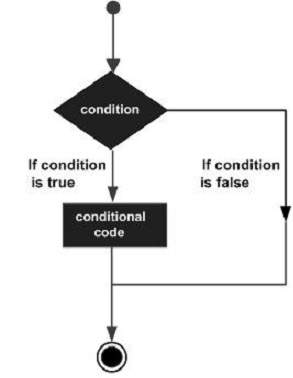Decision making structures require that the programmer specify one or more conditions to be evaluated or tested by the program, along with a statement or statements to be executed if the condition is determined to be true, and optionally, other statements to be executed if the condition is determined to be false.
Following is the general form of a typical decision making structure found in most of the programming languages −

LISP provides following types of decision making constructs. Click the following links to check their detail.
| Sr.No. | Construct & Description |
|---|---|
| 1 | condThis construct is used for used for checking multiple test-action clauses. It can be compared to the nested if statements in other programming languages. |
| 2 | ifThe if construct has various forms. In simplest form it is followed by a test clause, a test action and some other consequent action(s). If the test clause evaluates to true, then the test action is executed otherwise, the consequent clause is evaluated. |
| 3 | whenIn simplest form it is followed by a test clause, and a test action. If the test clause evaluates to true, then the test action is executed otherwise, the consequent clause is evaluated. |
| 4 | caseThis construct implements multiple test-action clauses like the cond construct. However, it evaluates a key form and allows multiple action clauses based on the evaluation of that key form. |
Leave a Reply